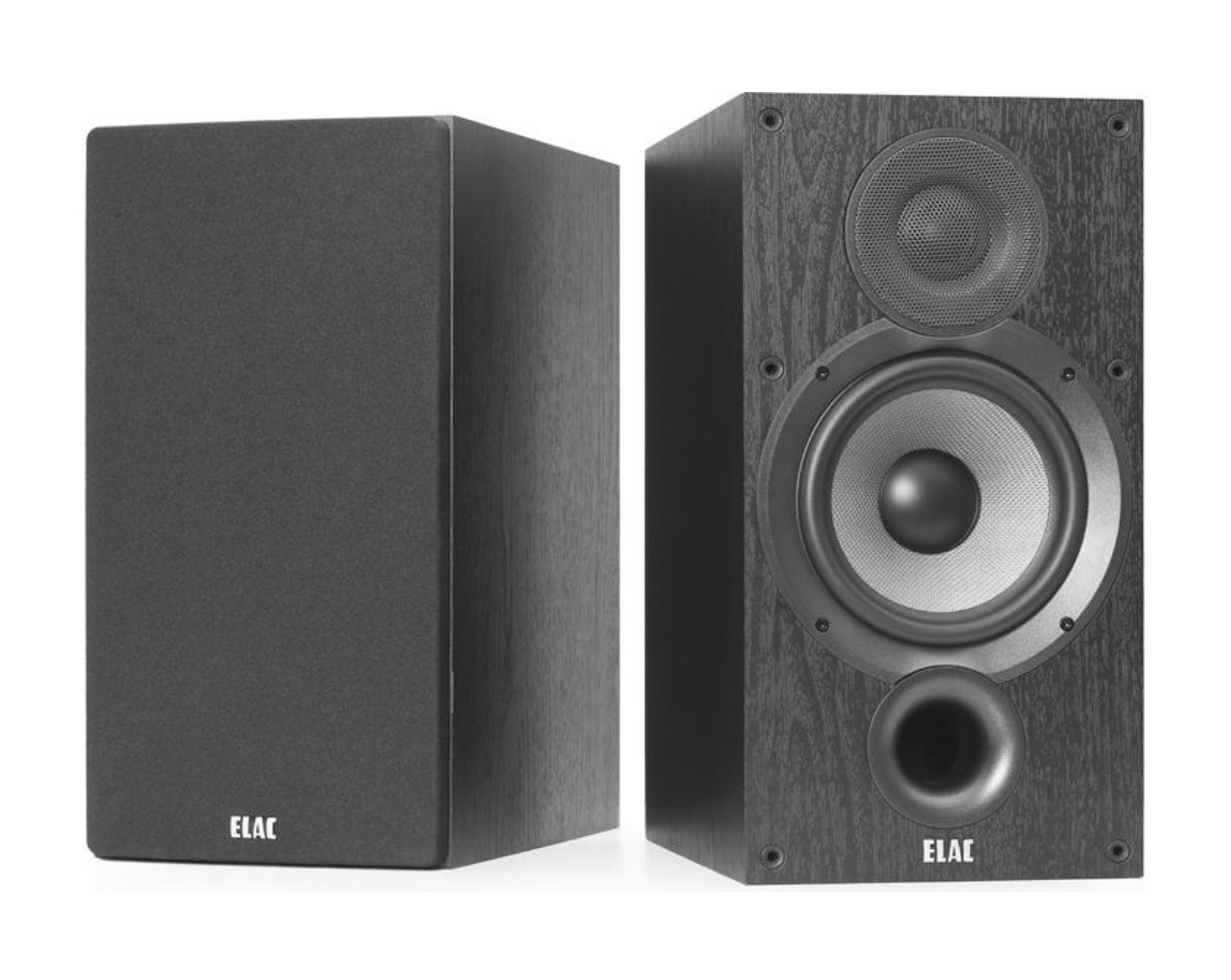
Bookshelf Speakers Lesson Learned
Years ago I had purchased a pair of Klipsch R-15M bookshelf speakers. They were used as front speakers for a surround set up, which included a separate subwoofer. The receiver I was using at that time had a menu setting for crossover frequency which allowed anything below that frequency to be routed to the subwoofer. I had that set to 200 Hz and the system sounded okay.

Fast forward a few years later and I repurpose those speakers for a small set up in a side room used as my office. I put the speakers up on a shelf which is built into the wall, and did not really use them much. I had them connected to a cheap amplifier I purchased from Amazon and connected an Apple AirPort Express to the amp for streaming via AirPlay.

The sound quality was average and I assumed it was the best a cheap amp and relatively inexpensive speakers could do.
Receiver Upgrade
I recently picked up a Pioneer SX-626 (a vintage receiver from the 70s). I had one of these when I was a kid and the sound quality of this receiver was impressive, especially back then. I had several medium powered receivers since, and nothing really compared to the sound of the Pioneer.
I connected the Pioneer to the Klipsch bookshelf speakers and it sounded bad. Not any worse than with the cheap amp I had there before the Pioneer, but just not right.
The Pioneer sounded better than the cheap amp, but just nowhere near what I remembered. Of course, the speakers I am using are not large floor speakers like I had back then, but I was expecting something better than what I was hearing.
Searching for Advice
I knew the issue with the sound quality was the combination of the type of speaker and how I had placed them in a shelf. What I did not know was what type of speakers would work in that space.
I turned to YouTube for some advice as to what options there were for different speakers for the same space. After all, I have bookshelf speakers, and I put them in the bookshelf. That should have worked better than what I was hearing.
Speaker Placement Matters
I quickly became educated on the simple fact that speakers with a rear port (unlike front ported speakers or acoustic suspension speakers) need to be placed several feet from a wall. If not, then low frequencies will be negatively affected, usually with amplified or emphasized low frequencies with muddled sounding results. That was exactly what I was hearing. Turning up the volume more made the problem worse.
The lower frequencies exit the rear port (as well as from the woofer in front) and when that surface is too close, the sound waves are not allowed much travel before they encounter a surface. The result can combine with the sound waves from the front in such a way that it sounds muddled.
Some recommend stuffing the ports with insulation or socks, but that just did not make much difference with these speakers. I even tried placing acoustic foam around the back of the shelf to absorb some of the sound.
Placement Recommendations
Many speaker manufacturers will recommend the range of distance between the speaker and rear wall for rear ported speakers. Almost none will recommend placement right against a wall (for rear ported speakers).
If I had front ported speakers, this would not be an issue, as those are designed to hang on a wall or be placed on a bookshelf. The port directs the low frequencies forward.
The reason why I never noticed this issue before was those speakers had been connected to a different receiver for a different purpose, which was in a surround setup where nothing below 200 Hz was directed to those speakers.
The Search for New Speakers
I went on a mission to find decent front ported speakers. I have limited space for speakers in this room, so my choices were limited.
There were far fewer models of bookshelf speakers that were front ported versus rear ported.
I went to a trusted retailer (Crutchfield) to browse options. I searched for front ported bookshelf speakers. There were far fewer front ported speakers available.
I saw front ported bookshelf speakers ranging from around $279 a pair all the way up to $1200 a pair. The crutchfield site has a feature where you can listen to and compare up to 4 speakers at once.
I first thought this is not really a valid way to test speakers, but after a few minutes of comparing while wearing decent headphones, I was able to actually hear differences between pairs of speakers.
My comparison came down to a pair of $699 bookshelf speakers to a pair of $279 bookshelf speakers as top contenders. Yes, the $699 pair sounded slightly better, it was not worth the jump in price. I chose the $279 Elac Debut 2.0 B6.2 speakers.

When the speakers arrived, I hooked them up in place of the Klipsch speakers and there was quite a dramatic improvement in sound quality. I had never personally heard such an improvement when changing out a component in a stereo system.
There is absolutely nothing wrong with the Klipsch speakers I had. When placed far enough from a wall, they sound great. However, they definitely cannot be placed on a bookshelf, unless that bookshelf has no back and is a few feet from the wall.
Final Thoughts
Without much experience with different speaker designs, I had purchased a set of speakers that required placement away from the rear wall. Of course this was not noticed until I began to use them for a different purpose (music instead of surround).
I will remember to take into account the port locations on speakers in the future. In fact, it would appear that rear ported speakers are common, and perhaps easier to design.
